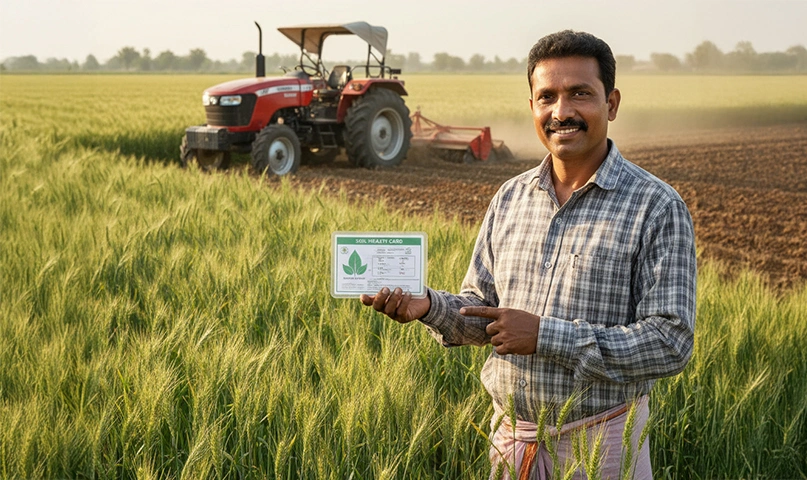Pradhan Mantri Krishi Sinchai Yojana: Guide to India’s Irrigation Revolution
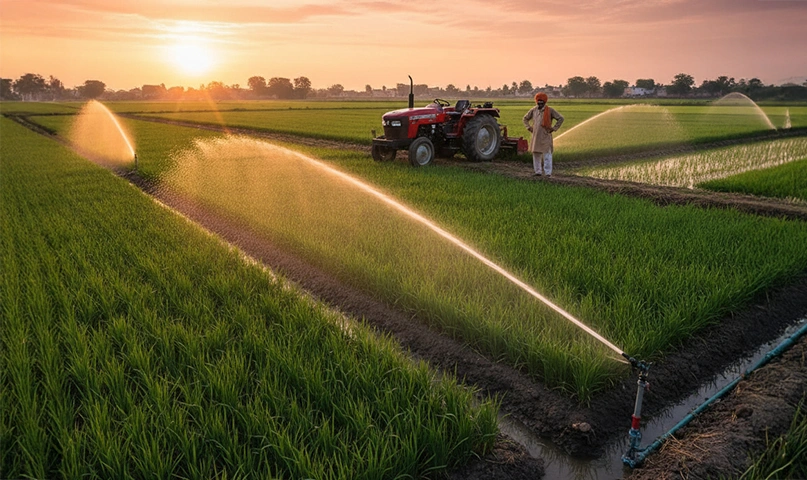
Agriculture in India depends heavily on water. Monsoons, rivers, groundwater, tanks and ponds—these are lifelines; but increasingly, they are unpredictable. Erratic rainfall, groundwater depletion, droughts, and inefficient irrigation systems combine to challenge farmers’ livelihoods and food security. To address these issues, the Government of India launched an umbrella mission in 2015-16: Pradhan Mantri Krishi Sinchai Yojana (PMKSY), meaning Prime Minister’s Agriculture Irrigation Scheme.
PMKSY represents a bold vision: “Har Khet Ko Pani”, more crop per drop, expanding assured irrigation, improving water use efficiency, and bringing modern irrigation technology to India’s farmlands. Over the past decade, it has become central to India’s irrigation revolution.
In this guide, we explore PMKSY in depth: its origins, objectives, components, benefits, achievements so far, how implementation works, eligibility, and the challenges ahead—because for a scheme of such scale, success depends on diligent execution and community engagement.
Origins and Launch

PMKSY was officially launched on 1st July 2015 by the Government of India, with the goal of converging investment in irrigation at the field (farm) level. It integrates multiple existing and new programs under one umbrella, to achieve assured irrigation (“Har Khet Ko Pani”), efficient farm‐level water use, and sustainable water conservation.
The mission became necessary because despite decades of investment in dams, canals, and groundwater wells, a large part of agricultural land still lacked reliable water supply, suffered from low water use efficiency, suffered from tank disrepair, and lacked adoption of micro-irrigation systems. PMKSY was crafted to fill these gaps.
Vision and Objectives
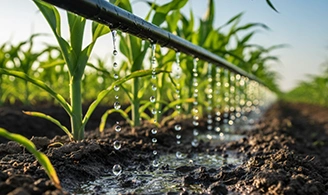
At its core, PMKSY aims to transform Indian agriculture through water: ensuring that every farm has access to water, maximizing the use of water, conserving resources, and empowering farmers. Key objectives include:
- Convergence of irrigation investments at field level – States prepare State Irrigation Plans (SIPs) and District Irrigation Plans (DIPs) to allocate resources effectively.
- Expand cultivable area under assured irrigation (“Har Khet Ko Pani”—every field gets water)
- Improve on-farm water use efficiency – reduce waste, improve duration and availability of water for crops. Using precision irrigation, drip, sprinkler, etc.
- Integrated water source and distribution management – linking source creation, canals, drains, minor irrigation and farm application.
- Rainwater harvesting, watershed development, aquifer recharge for sustainable water conservation.
- Encourage precision irrigation and water-saving technologies (i.e. Per Drop More Crop component).
- Promote extension activities and crop alignment, awareness among farmers and field functionaries.
Components of PMKSY

PMKSY is not one single program but a bundle of components, each addressing a specific aspect of irrigation infrastructure, water conservation, and farmer‐level implementation. We outline them below.
|
Component |
Purpose |
Key Activities |
|
Accelerated Irrigation Benefit Programme (AIBP) |
Closes gaps in major and medium irrigation projects, quickens implementation of ongoing projects. |
|
|
Har Khet Ko Pani (HKKP) |
Ensure water supply to every farm field. Includes: |
|
|
Per Drop More Crop (PDMC) |
Promote micro-irrigation, drip and sprinkler systems, precision farming, water saving technologies to get more yield per drop of water. |
|
|
Watershed Development Component (WDC) |
Integrated land and water resource management in rainfed areas; soil conservation, recharge of groundwater, reducing runoff etc. |
Each component is implemented through a mix of central government funding, state government participation, and beneficiary share or subsidies (especially for small/marginal farmers) depending on the sub-program.
Key Features and Innovations
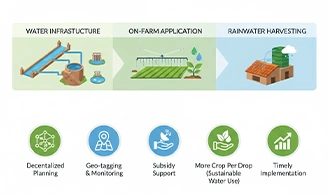
PMKSY is not just about building canals or repairing tanks—it also brings in modern features and focus areas:
- Decentralized Planning: States prepare SIPs and DIPs to reflect local needs; plans are geo-tagged so tracking is transparent.
- Sustainable Water Use: Adoption of micro-irrigation systems; drip and sprinkler irrigation; conserving water in rainfed areas; aquifer recharge.
- Renovation of Traditional Water Bodies: Repairing tanks, ponds, water storage that had fallen into disuse (RRR) to bring back lost irrigation potential.
- Monitoring & Targets: Regular tracking of physical and financial progress; setting targets for hectare-wise irrigation potential and area of cultivable land.
- Subsidy and Financial Support: Subsidy for micro-irrigation systems especially for small and marginal farmers; central assistance for state projects.
Implementation Timeline and Target Phases

- PMKSY began in 2015-16 with a mandate covering the period 2015-16 to 2019-20.
- In 2021, the government approved extension of PMKSY for 2021-22 to 2025-26 with revised outlays, especially for components like AIBP, HKKP, Watershed Development. Ground Water component and PDMC have separate modes of approval.
Targets set for the period 2021-26 include:
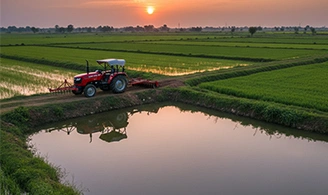
- Creating new irrigation potential under AIBP and CAD&WM (large/medium projects) of several lakh hectares.
- Under HKKP-SMI and RRR sub-components, surface minor irrigation and restoration of water bodies.
- In Watershed Development, bringing degraded and rainfed lands under protective irrigation.
Achievements So Far

Some key achievements up to recent years (2016-22) are:
|
Component |
Achievement |
|
AIBP (Large & Medium projects) |
Created ~24.35 lakh hectares of new irrigation potential. |
|
Command Area Development & Water Management (CAD&WM) |
~16.42 lakh hectares of cultivable command area covered. |
|
HKKP-SMI |
~2.58 lakh hectares of irrigation potential created through surface minor irrigation |
|
RRR of water bodies |
~0.84 lakh hectares of irrigation potential restored. |
|
Ground Water (HKKP-GW) |
~69,378 hectares brought under command via groundwater sources. |
|
Per Drop More Crop (micro-irrigation) |
Covered ~61.72 lakh hectares under micro irrigation systems. |
|
Watershed Development Component |
Around 14.54 lakh hectares under protective irrigation or watershed interventions. |
These numbers reflect only the cumulative progress until 2022. Many projects are still ongoing.
Benefits to Farmers, Environment and Agriculture

PMKSY has delivered benefits across multiple dimensions:
- Reduced Dependence on Rainfall
By expanding assured irrigation coverage and creating water sources (groundwater, small canals, water harvesting), farmers gain more certainty of cropping. - Improved Crop Yields & Income
With water available reliably and modern irrigation methods (drip, sprinkler), farmers can obtain higher productivity per hectare, reduce crop losses, optimize inputs like fertilizer. The “More Crop per Drop” component helps reduce water use per unit yield. - Conservation of Water Resources
Micro-irrigation saves water; watershed development helps recharge aquifers; repair of ponds and tanks improves catchment areas. - Reviving Traditional Water Bodies
Water bodies like tanks, ponds, lakes that provide local irrigation, recharge groundwater, support biodiversity, now being renovated through RRR sub-component. - Environmental Benefits
Less water stress, more ground recharge, better soil moisture; less over-extraction of groundwater. - Better Agricultural Planning & Efficiency
With SIPs / DIPs, water budgeting, crop alignment awareness, farmers and local bodies can plan cropping patterns and irrigation schedules. - Socio-economic gains
More stable agricultural incomes, reduced risk of crop failure, less need for costly water pumping or water purchase; potential employment through watershed and RRR works.
How Implementation Works: Roles, Salient Mechanisms
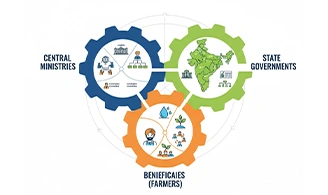
To ensure effectiveness, PMKSY relies on multi-level institutional frameworks, funding models, monitoring, and technology integration.
- Central Government & Ministries
Components like AIBP, HKKP are under Ministry of Jal Shakti (water resources), others like Watershed Development under Ministry of Rural Development, and Per Drop More Crop under Department of Agriculture & Farmers Welfare. Coordination at central level via Inter‐ministerial committees including NSC (National Steering Committee) under Prime Minister, NEC under NITI Aayog. - State Governments
Prepare SIPs and DIPs, sanction projects, implement on ground, co-finance, maintain assets. - Beneficiaries (Farmers, Local Communities)
Adoption of micro irrigation, participation in watershed committees, maintaining restored water bodies, aligning cropping patterns. - Technology & Monitoring
Geo-tagging of works; real-time tracking of progress; physical verification; use of remote sensing etc. - Funding
The scheme has a large budget outlay with contributions from the central government, state governments, beneficiary farmers, and in some cases external assistance. For example, PMKSY for 2021-26 period has an outlay of ~₹93,068.56 crore central assistance of ₹37,454 crore, debt service to NABARD, plus state shares.
Eligibility & Beneficiaries

PMKSY is meant to benefit all classes of farmers and regions, especially those in drought-prone, rainfed, or underserved irrigation areas.
There isn’t a narrow beneficiary “application” in many sub-components; rather state-level project implementation leads to farmer access. For micro-irrigation, farmers apply for subsidies via designated implementation agencies.
Subsidies & Cost Sharing

- Under components like Per Drop More Crop (micro irrigation), Surface Minor Irrigation (SMI), RRR, subsidies are often provided—varying by state, by category of farmer (small/marginal vs others). For example, some states offer 45-55% subsidy to small & marginal farmers for sprinkler or drip systems.
- Central share and state share contributions in projects under AIBP / HKKP etc.
Recent Targets and Future Plans

PMKSY’s extension for 2021-22 to 2025-26 comes with ambitious targets:
- Under AIBP + CAD&WM: Creation of ~13.88 lakh hectare new irrigation potential; ~30.23 lakh hectare cultivable command area under CAD&WM.
- Under HKKP (SMI, RRR etc.): New irrigation potential via SMI and renovated water bodies.
- Watershed component: Completing sanctioned projects covering ~49.5 lakh hectare rainfed / degraded lands, plus ~2.5 lakh ha additional protective irrigation area.
These targets reflect center-state collaboration and an intent to scale up significantly.
Challenges / Issues Faced

Despite the progress, PMKSY comes with its share of challenges:
- Delayed Project Execution
Large irrigation & medium / major projects often get delayed due to land acquisition, environmental clearances, lack of funds, or coordination issues. - Lack of Farmer Awareness & Adoption
Some farmers are still unaware of micro-irrigation subsidies, shifting cropping patterns, or efficient water management practices. - Equity Concerns
Small and marginal farmers may face difficulties in affording self-share, or in accessing benefits promptly. - Maintenance & Sustainability
Restored water bodies require maintenance; canals and infrastructure degrade if not well managed. - Ground Water Over-extraction
Heavy reliance on tube wells and pumps remains; though components for aquifer recharge exist, more concerted effort needed. - Monitoring & Transparency
Geo-tagging, data collection, and timely progress reporting are essential; inconsistencies in data or delays hamper accountability. - Climate Variability
Even with irrigation, unpredictable monsoons, extreme weather events challenge water availability and system resilience.
How Farmers Can Benefit & Participate
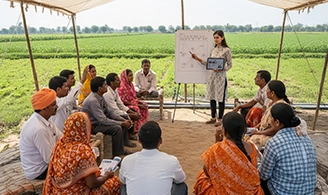
If you are a farmer or stakeholder, here’s how you can engage and benefit from PMKSY:
- Keep track of State/District Irrigation Plans (SIPs / DIPs) to know which projects are coming up in your area.
- Apply for micro-irrigation subsidy under the PDMC component if you qualify. Look up designated nodal agencies (state agriculture or micro-irrigation departments).
- Utilize repaired water bodies or restored tanks for irrigation. Engage with local water bodies committees.
- Follow crop alignment and water budgeting practices so that water is used effectively.
- Participate in Watershed Development activities if your lands are in rainfed or degraded zones.
PMKSY & Synergies with Other Schemes
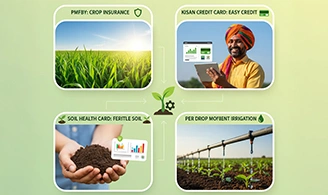
PMKSY works in tandem with several other central schemes to maximize farmer welfare:
- Pradhan Mantri Fasal Bima Yojana (PMFBY) for crop insurance – irrigation + insurance help reduce crop risk.
- Kisan Credit Card / Farm credit schemes – with assured water, credit is more productive.
- Soil Health Card scheme, Paramparagat Krishi Vikas Yojana etc. – better soil + better water access = better productivity.
- Atal Bhujal Yojana – focused on groundwater management and community participation.
Future Directions & Recommendations

To fully realize PMKSY’s potential, the following steps may help:
- Enhance Farmer Awareness through training, demonstration farms, mobile advisories.
- Strengthen Maintenance Regimes for canals, tanks, micro-irrigation infrastructure.
- Focus on Equity — ensure small/marginal farmers, women farmers get priority and support.
- Strengthen Technology Use — remote sensing, IoT-based monitoring, precision scheduling.
- Encourage Private Sector Participation — through public private partnerships in irrigation, micro equipment supply and maintenance.
- Respond to Climate Change — drought resilient designs, variability tolerant crops, water storage augmentation.
- Better Governance & Transparency — data dashboards, participatory monitoring, grievance redressal at local levels.
Conclusion

The Pradhan Mantri Krishi Sinchai Yojana (PMKSY) is India’s ambitious plan to change the face of irrigation. Over the years, PMKSY has built irrigation potential over millions of hectares, repaired thousands of water bodies, promoted micro-irrigation at scale, and brought watershed development into mainstream planning. While challenges remain, the foundations are strong.
For India to feed its people sustainably, increase farm incomes, conserve environment, and withstand climate change, irrigation must no longer be a weak link. PMKSY, with its holistic design, is India’s attempt to make irrigation revolution a reality.
As farmers, policymakers, community organizations, and state governments continue to work together, PMKSY can help ensure that summer and winter rains, canal water and underground aquifers, drip tubes and repaired tanks—all converge to bring water where it's needed: under every crop, every field, every farmer.










